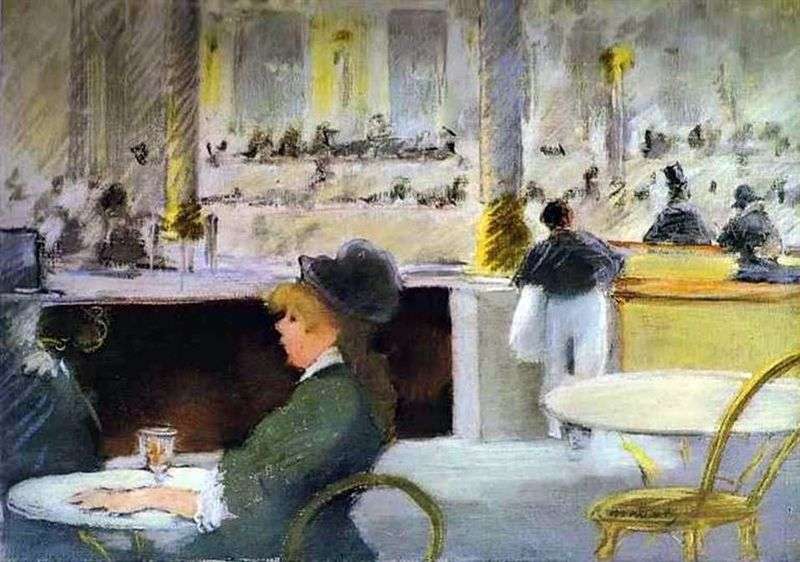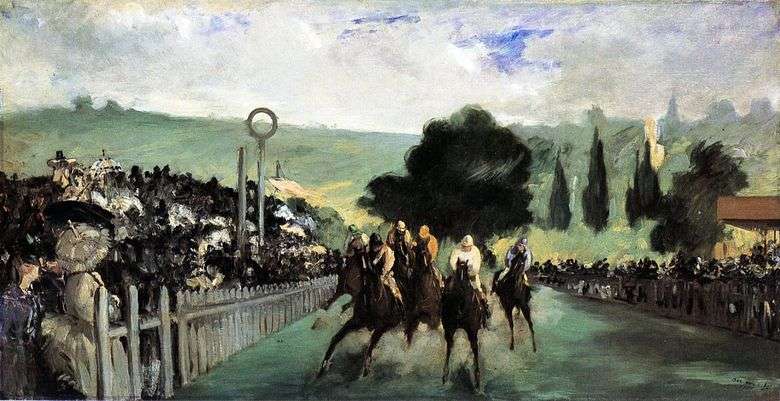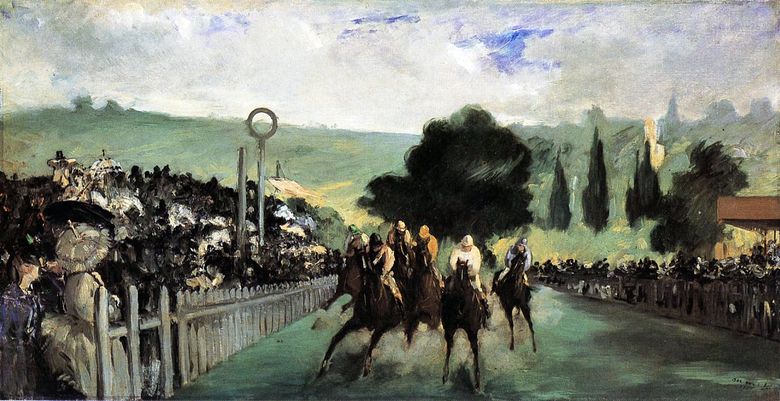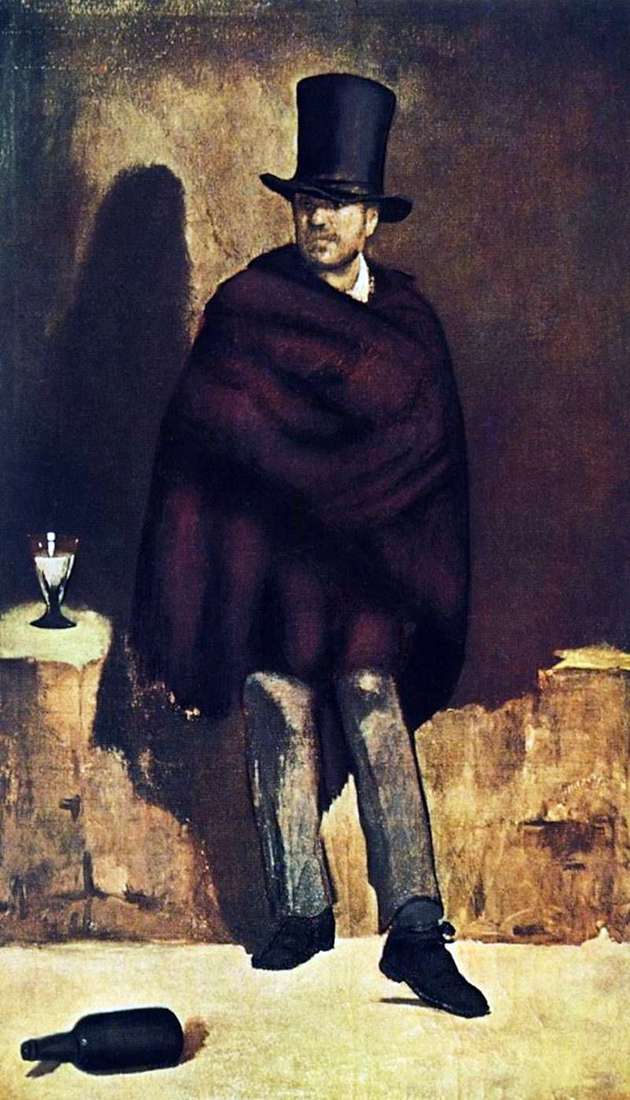
In the second half of the 1860s, Manet’s work became widely known among creative intelligentsia and connoisseurs of painting, and the artist himself soon led a creative movement called “The Batignolles School”, whose members were impressionist artists Claude Monet, Auguste Renoir, Edgar Degas, Berta Morisot and others.
In addition, prominent writers of the time were members of the creative association. Meetings of the participants of the “Batignolles School” were held in the cafe “Gerbua”, which had just opened at that time in Montmartre. In the cafe “Gerbua” did not stop the fierce debate about art and the new visual manner of writing. The school was even nicknamed “Mane’s gang”.
Many were new to the way in which Manet created his works. Some young painters even showed a desire to repeat the unusual technique of creating paintings in their canvases. Over time, more and more new participants entered the school, including Paul Cezanne, Emile Zola and many others. Meetings of artists and writers became frequent and fascinated by the possibility of active discussion, open expression of their views.
In 1867, Manet attempted to organize his own solo exhibition. The opening of the exhibition was scheduled for May 24th. However, despite all the desire and efforts of Man, the exposition of his best works was not successful. Nevertheless, the failure did not break the will of the artist, and he continued to create and communicate with like-minded people, promoting and spreading his artistic method. The creation of the work “Horse racing on Longchane”, which nowadays is located at the Chicago Art Institute in Illinois, belongs to this period. The picture resembles a watercolor sketch. The outlines of the images, the vague outlines of the silhouettes create the impression of a photographic frame.
The group of riders is depicted by the artist as a kind of composite clot, a clot of powerful energy. The palette of the picture is formed by smooth flowing transitions of color. Different shades of green in saturation paint the air, and convey not only the weather nuances, but also highlight the overall exciting mood from what is happening. The swiftness of the movements is transmitted thanks to a special method of applying strokes with torn, energy-filled movements that form color beams, varied in texture and glare.
The spectators are depicted as a single motley coloristic mass without detailing and prescribing faces, poses, costumes. The picture conveys internal tension and excitement of races. The work was written soon, which allowed to catch a critical moment and capture the emotional infectiousness of the event.
 Cafe interior by Edouard Manet
Cafe interior by Edouard Manet Carreras de caballos en Longchamp – Edouard Manet
Carreras de caballos en Longchamp – Edouard Manet Lonshan Racing – Edouard Manet
Lonshan Racing – Edouard Manet Absinthe Lover by Edouard Manet
Absinthe Lover by Edouard Manet Old musician by Edouard Manet
Old musician by Edouard Manet Boat Studio Claude Monet by Edouard Manet
Boat Studio Claude Monet by Edouard Manet Bar in Folies Bergeres by Edouard Manet
Bar in Folies Bergeres by Edouard Manet In the boat by Edouard Manet
In the boat by Edouard Manet